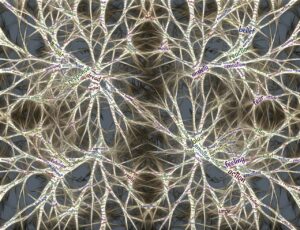10kclimatechallenge
10kclimatechallenge
Are you the next great climate scientist? Awarding $10,000 for the proven reproducible rate of CO2 forcing. (Verified by the UN IPCC)

Model Questions
These are all the questions I found related to this topic in the 3000+ pages of IPCC AR4 and AR5.
AR6 coming soon!
Models are not perfect, instead they are full of uncertainties and questions for many reasons.
The IPCC explains limitations in computing as well as observations result in “various alternative and equally plausible numerical representations, solutions and approximations for modelling the climate system”. (AR5 FAQ 12.1 Page 1036)
IPCC explains there are a variety of techniques to model how each driver effects the climate. For example, you can just look at one factor at a time, but they note this is does not work because “it is computationally prohibitive to simulate the response to every individual factor of interest.” To deal with this they use estimates of each forcing. (AR5 Section 8.1.1 Page 664)
On the other hand, a more complex model does not make for a better model because as a model gets more complex errors can occur, making them even less accurate. (AR5 FAQ 9.1 Page 824)
In AR5 the IPCC now admits there is not a single champion model as some models do better than others for each different climate variable. (AR5 FAQ 9.1 Page 824)
The IPCC is now trying to come up with ways to score models. (AR5 FAQ 9.1 Page 824)
However, the IPCC believes “diversity is considered a healthy aspect of the climate modelling community”. All this gives us a “range of plausible climate change projections at global and regional scales”. They note each model can be good at one thing but bad at another. (AR5 FAQ 12.1 Page 1036)
Besides limitations in computing the IPCC also admits not all of the climate processes are understood, stating “underlying physical processes are not yet completely understood, making them difficult to model.” (AR5 FAQ 1.1 Page 140)
The IPCC goes on telling us “despite the progress that has been made, scientific uncertainty regarding the details of many interna remains.” (AR5 FAQ 9.1 Page 824)
More specifically the IPCC tells us errors come from a variety of sources stating “uncertainties in climate projections arise from natural variability and uncertainty around the rate of future emissions and the climate’s response to them”. (AR5 FAQ 1.1 Page 140)
The IPCC today use a “direct approach to model evaluation is to compare model output with observations and analyze the resulting difference”. They note to do this they must understand errors and uncertainties and where data is lacking, they fill in the gaps by “resort to intercomparison of model results.” (AR5 Section 9.1.1 Page 746)
The IPCC goes on to note that models will always be limited because greenhouse gases are going to levels where they have never been at before. (AR5 FAQ 9.1 Page 824)
Models can differ other ways. For example, this idea of a “tipping point”. The IPCC defines a “tipping point” as when it maybe not be possible to recover to a previous state. The IPCC states simple models show a possible ‘tipping points’ but complex models do not. They note ocean circulation or other thresholds may prevent a tipping point from ever happening. (AR5 Section 1.2.2 Page 129)
For example, as the earth heats up negative loopbacks kick in, cooling the earth. For example, ocean currents speed up like a radiator in your car. Does this explain past temperature drops?
The IPCC states models are able to project the “direction” of climate change “but the projected size of those changes cannot be precisely predicted.” (AR5 FAQ 1.1 Page 140)
However, the idea models can reproduce the direction but not the range seems to be challenged when considering the warming hiatus from 1998-2012 where the temperature went flat.
The warming hiatus is a big question because AR4 made it very clear temperature would continue in an upward direction.
The IPCC believes with “medium confidence” the models did not reflect the warming hiatus due to internal variability, overestimating the effect of greenhouse gases, and other forcing errors. (AR5 Box 9.2 Page 772)
The IPCC goes on to note even if all the models and all the data happen to match perfectly, they can never be certain the models are accurate because of internal variability. (AR5 Section 10.2.1 page 873)
This is an important statement because even if the models match for a period of time proves nothing, but matching does help build confidence in the models.
The IPCC also notes models have overestimated warming in tropical troposphere over the last 3 decades as well as underestimating longer term lower stratospheric cooling. (AR5 Chapter 9 Executive Summary Page 743)



So Many Model Questions.
This next section focuses on models which are the primary tool for proving the rate of CO2 forcing. The questions on models cover many important areas like internal variability, feedbacks, tipping points, storms, ice, temperature, ocean currents and more.
Let’s start by looking at general model questions seen above. Then next check out questions on regional models.

The Questions Chapter
Over 150 climate questions from AR4/AR5.
Questions and more questions.
This section highlights all the important climate questions described in the UN’s IPCC assessment reports, AR4 and AR5. AR6 is coming soon!
AR4 and AR5 make up the most complete and current climate information out there, a road map for future generations. However, they are not the easiest reads because information on any particular subject is found throughout the 3000+ pages of these reports.
You make think over time there would be less questions as the climate gets figured out, but from AR4 to AR5 the number of question and material increased by several fold.
One reason for this increase in climate questions from AR4 to AR5 is the fact many predictions made in AR4 were missed, and things have been learned.
The IPCC examines most of these in more detail throughout AR5 using AR4 as a base for the science.
Inspiring the next generation
You might be on the same path?
Sharing what I have learned in my 35 years of being a “climate activist”.
Be an informed climate activist or maybe even the next great scientist.
AR4 and AR5 are road maps for the next generation of climate scientists.
I am awarding $10,000 for the proven rate of CO2 forcing to the next great scientist of our time.
Review of the IPCC AR4 and AR5
Collection of 9200 peer-reviewed climate studies. This is the science with 100s of questions, contradictions, missed predictions, areas lacking data, and more.
Following the Science
Become an informed climate activist!
10kclimatechallange
All the Chapters
My Personal Climate Journey.
35 years and counting. You may be on the same journey.
Review of IPCC AR4 and AR5
Why AR4 and AR5 are so important.
Theory Chapter
Breaks down CO2 forcing and why models are important.
Temperature Chapter
What is warming? Entire earth? Oceans? Surface? What to know.
Model Chapter
Why use models? How are they doing?
Ocean Chapter
Role of the world's oceans that stores over 90% of Earth's heat.
Atmosphere Chapter
Is the atmosphere cooling or warming the earth?
Gases Chapter
Focus on CO2 and other greenhouse gases.
Civilization Chapter
Looking at past climate change affect on previous civilizations.
Question Chapter - ON LINE
Summary of every important question I found in AR4/AR5. More than 150 of them.
Prediction Chapter
Summary of every important prediction I found in AR4/AR5.
What is the IPCC?
UN’s IPCC Assessment Reports 4 and 5 (AR4 2007 and AR5 2014). These UN reports include over 600 authors from 32 different countries assessing 9,200 peer-reviewed studies so they are the all-inclusive on the current state of climate science putting out new reports every seven or so years.
AR5 explains the United Nation’s IPCC was created in 1988 to provide world governments with “clear information on the state of today’s climate science as well as potential impacts, and options for adaptation and migration based on regular assessments”. (AR5 Section 1.2.1 page 123)

Weather versus Climate
Is the weather or the climate easier to predict?




